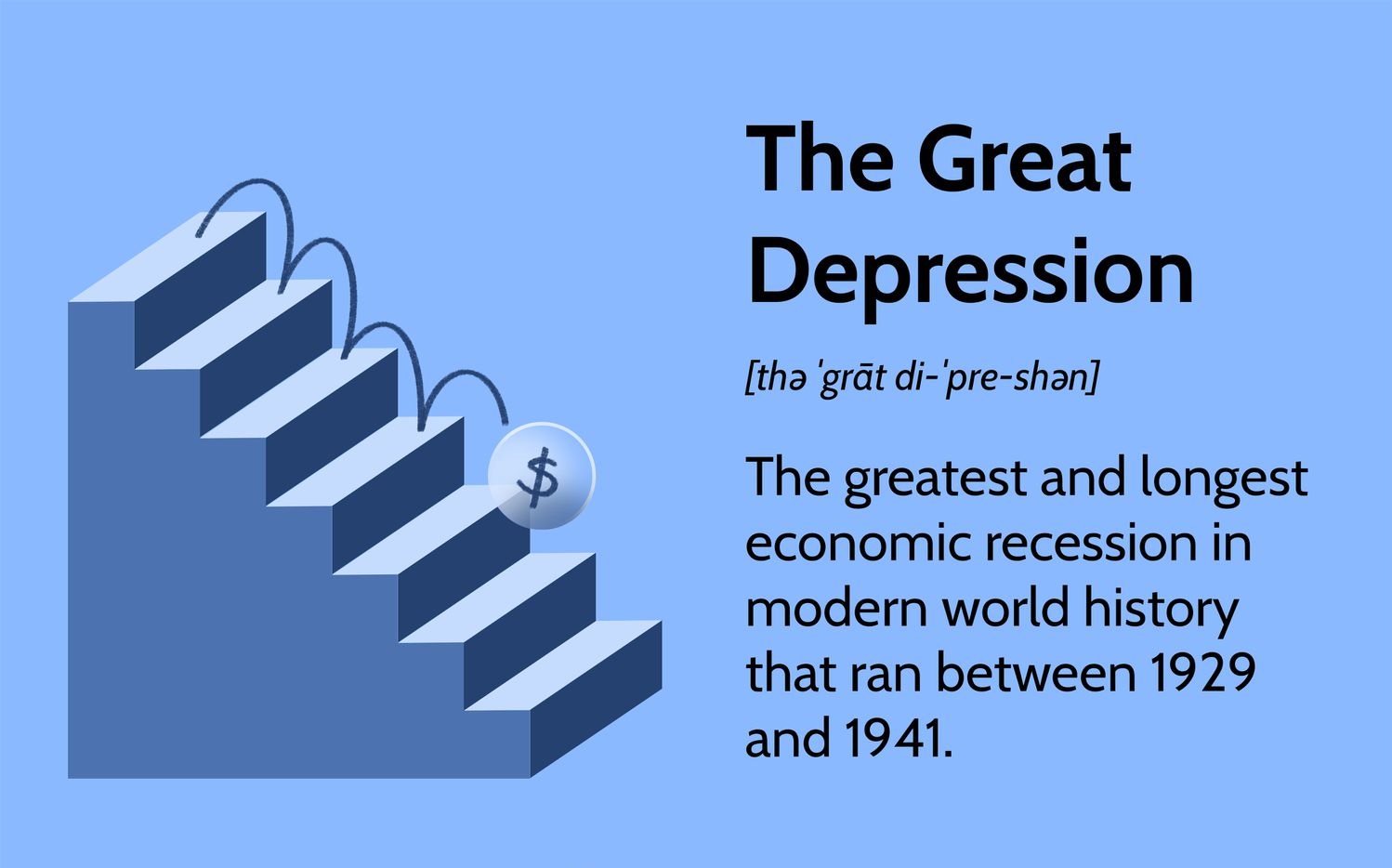Stocks
During the Great Depression, investing in stocks was a risky endeavor. The stock market experienced a significant crash in 1929, wiping out billions of dollars in investments and leading to widespread panic among investors. However, not all stocks were doomed during this period. Some investments managed to weather the storm and even provide substantial returns for those who held on.
One such example is the Coca-Cola Company. Despite the tough economic climate, Coca-Cola managed to thrive during the Great Depression. The company continued to innovate and market its products, which helped maintain consumer interest and loyalty. As a result, the company’s stock value remained relatively stable, providing a sense of security to investors.
Another resilient stock during that period was Procter & Gamble. The company, known for its consumer goods, remained profitable by focusing on essential products that consumers continued to need, such as soap and detergent. This stability allowed the company’s stock to hold its value, making it an attractive investment option.
Additionally, utility companies like American Electric Power (AEP) also showed resilience. People still needed electricity and power even during the toughest economic times, ensuring a consistent demand for AEP’s services. As a result, their stock prices remained stable, proving to be a reliable investment choice.
Investing in stocks during the Great Depression required careful consideration and research. While many stocks were heavily impacted by the economic downturn, some companies, like Coca-Cola, Procter & Gamble, and AEP, managed to survive and even thrive. These resilient stocks serve as a reminder that even in the worst of times, certain investments can withstand the storm and provide favorable returns.
Bonds
During the turbulent years of the Great Depression, many investors turned to bonds as a safer alternative to stocks. Bonds offered a more stable investment option, providing a predictable income stream and a higher level of security compared to the volatile stock market.
US Treasury bonds were particularly sought after during this period. The government’s commitment to repaying its debt gave investors confidence in the reliability of these bonds. The interest rates offered on Treasury bonds were also attractive, making them an appealing investment option for those seeking stability in uncertain times.
In addition to Treasury bonds, municipal bonds also proved to be a resilient investment during the Great Depression. These bonds were issued by state and local governments to fund public projects. While some municipalities faced financial strain during the economic downturn, others remained financially stable and continued to pay interest on their bonds. This reliability made municipal bonds an attractive option for investors looking for a steady income.
Corporate bonds, on the other hand, presented a higher level of risk during the Great Depression. Some companies faced financial difficulties and were unable to meet their bond obligations. However, bonds from established and financially sound companies, such as General Electric and AT&T, still provided a level of stability for investors. These companies had a reputation for meeting their obligations, even in challenging economic times.
Investing in bonds during the Great Depression required careful selection and thorough research. While some bonds carried a higher risk, others provided a solid income stream and a sense of security to investors. US Treasury bonds, municipal bonds from financially stable municipalities, and corporate bonds from reputable companies were among the options that helped investors weather the storm and find stability amidst the economic chaos.
Certificates of Deposit
When the Great Depression hit, many investors sought refuge in Certificates of Deposit (CDs). CDs offered a safe and secure investment option that provided a fixed interest rate and a guaranteed return of principal upon maturity. This made them an attractive choice for those looking for stability amidst the economic turmoil.
Banks were the primary issuers of CDs during this time. Investors would deposit a certain amount of money with a bank for a specific term, typically ranging from six months to a few years. In return, the bank would pay them a fixed interest rate over the duration of the certificate.
The appeal of CDs during the Great Depression was their low risk. The Federal Deposit Insurance Corporation (FDIC), established in 1933, insured deposits held in member banks up to a certain amount. This insurance provided peace of mind to investors, knowing that even if the bank failed, their funds were protected.
Furthermore, the interest rates offered on CDs during the Great Depression were generally higher than what could be earned from other investments. With the stock market in turmoil and uncertainty surrounding other financial instruments, CDs presented a conservative and reliable option for both individual and institutional investors.
Investing in CDs required careful consideration of the interest rates offered by various banks, as well as the reputation and stability of the institution. Choosing a well-established bank with a solid track record was crucial to ensuring the safety of the investment.
While CDs may not have provided substantial returns compared to riskier investments, their reliability and security made them an attractive choice during the uncertain times of the Great Depression. For investors prioritizing the preservation of capital and seeking a steady income stream, Certificates of Deposit offered a safe haven amidst the financial storm.
Real Estate
The Great Depression had a profound impact on the real estate market. Property values plummeted, and many homeowners struggled with mortgage foreclosures and homelessness. However, not all real estate investments suffered the same fate during this period. Savvy investors were able to make strategic purchases and capitalize on the market’s downturn.
One approach to real estate investment during the Great Depression was to buy properties at distressed prices and hold onto them until the market recovered. Land and buildings that had lost significant value presented opportunities for long-term gains. Investors who had the financial means and foresight to acquire real estate during this time were often rewarded when the market eventually rebounded.
Another approach was to focus on income-generating properties. Rental properties, such as apartments or commercial buildings, provided a steady stream of income even during the economic downturn. Investors who were able to acquire rental properties at discounted prices and maintain a consistent occupancy rate were able to weather the storm and generate stable returns.
Government interventions also played a role in real estate investment during the Great Depression. The establishment of the Home Owners’ Loan Corporation (HOLC) in 1933 helped stabilize the housing market by refinancing troubled mortgages and preventing foreclosures. This intervention provided opportunities for investors to acquire properties that were either foreclosed or sold at reduced prices due to the HOLC’s actions.
While real estate investments during the Great Depression were not without their risks, those who approached the market strategically and capitalized on the distressed conditions were able to find success. By purchasing properties at discounted prices, focusing on income-generating properties, and taking advantage of government interventions, some investors were able to weather the storm and make profitable real estate investments during this challenging era.
Gold and other Precious Metals
During the Great Depression, investors turned to gold and other precious metals as a safe haven amidst the economic turmoil. The value of paper money had become uncertain, and people sought tangible assets that had stood the test of time.
Gold, in particular, has long been regarded as a store of value and a hedge against inflation. Its limited supply and universal appeal made it an attractive investment during the Great Depression. As the value of currency declined, the price of gold soared. Investors who held gold or gold-related investments, such as gold mining stocks, were able to protect their wealth and even see substantial returns.
In addition to gold, other precious metals like silver and platinum also had their place in the investment landscape. Silver, often referred to as “poor man’s gold,” had industrial applications along with its historical value as a form of currency. Platinum, on the other hand, was highly sought after for its scarcity and use in jewelry and automobile manufacturing.
Investing in gold and other precious metals during the Great Depression ranged from purchasing physical assets like bullion or coins to buying shares in mining companies. Owning physical gold provided a tangible asset that could be stored securely, while investing in mining companies allowed investors to participate in the potential profits of gold extraction.
It’s important to note that investing in precious metals comes with its own set of risks. The value of these assets can fluctuate, and their prices can be influenced by various factors, such as supply and demand dynamics, economic conditions, and geopolitical events. Therefore, thorough research and understanding of the market are crucial before making any investment decisions.
During the Great Depression, gold and other precious metals served as a safe haven for investors seeking stability in uncertain times. Their historical value, scarcity, and inflation-hedging properties made them coveted assets. While the prices of these metals could be volatile, those who understood the market and had the foresight to invest in gold and other precious metals were able to preserve their wealth and potentially achieve significant returns.
Art and Collectibles
Art and collectibles are often seen as alternative investments that can provide both financial returns and aesthetic enjoyment. During the Great Depression, some investors turned to these tangible assets as a way to preserve wealth and diversify their portfolios.
One advantage of investing in art and collectibles during this period was their tangible nature. Unlike stocks or bonds, which were experiencing significant volatility, art and collectibles could be physically owned and displayed. This provided a sense of security and enjoyment, especially during challenging times.
Artworks by renowned artists proved to be valuable investments during the Great Depression. Paintings by artists such as Pablo Picasso, Claude Monet, and Vincent van Gogh held their value and even appreciated over time. Collectors and investors who had the foresight to acquire these artworks were able to weather the economic storm and potentially achieve significant returns in the long run.
Collectibles, such as rare coins, stamps, antique furniture, and vintage cars, also attracted investors during the Great Depression. These items often have a limited supply and a strong market demand among collectors. Investing in collectibles required knowledge and expertise in the specific category, as well as careful consideration of factors such as condition, rarity, and historical significance.
It’s important to note that investing in art and collectibles comes with its own set of risks. Valuation can be subjective, and the market for these assets can fluctuate based on trends and shifts in consumer preferences. Additionally, storing and maintaining these items may incur additional costs.
Nevertheless, for those with a passion for art and a keen eye for valuable collectibles, investing in these assets during the Great Depression provided an opportunity to diversify their investment portfolios while indulging in their personal interests. Art and collectibles served as tangible assets that could be appreciated both aesthetically and financially, offering a potential avenue for preserving wealth during uncertain economic times.

























